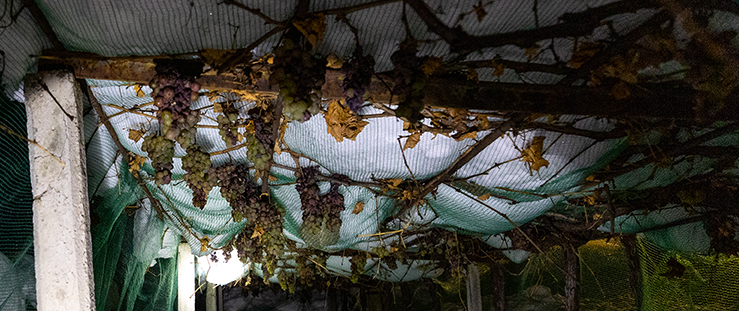The world of wine is full of fascinating processes. Among them, cryoextraction is increasingly appealing to sweet white wine enthusiasts. This technique is based on a simple but innovative logic: using cold to concentrate grape aromas.
If you're interested in wine-related articles, download our app for IOS or Android. It will give you access to our wine lexicon, our articles and our innovative solution, designed for all wine consumers and collectors.
A modern method inspired by nature
The principle of cryoextraction wine is inspired by what happens naturally in late harvest or ice wines. The grapes are artificially cooled before pressing. This removes the water in the form of ice, leaving only the most concentrated juice.
The technique differs from conventional harvesting. Here, we're not just looking for over-ripeness. Cold becomes an extraction tool. The winemaker concentrates the fruit's sugars, acids and aromatic compounds.
How does cryoextraction work?

It all starts with perfectly ripe grapes. Once harvested, they are placed in cold storage at between -5 and -8°C. This moderate temperature is sufficient to partially freeze the water contained in the berries, but without damaging the internal structure of the fruit.
After cooling for several hours, the grapes are pressed. Only the unfrozen fraction runs off. This rich, aromatic juice becomes the basis for technical sweet white wine. The whole process demands precision, hygiene and controlled timing.
Taste benefits
By using cryoextraction, winemakers aim to sublimate the aromatic profile. The cold prevents oxidation of the juices. The result is intense freshness and tension on the palate.
What's more, this method accentuates floral and fruity aromas. It offers a perfect balance between sugar and acidity. Connoisseurs will find notes of pear, quince, apricot and orange blossom.
An alternative to noble rot
Traditionally, sweet white wines are made from grapes affected by botrytis cinerea. This fungus, also known as noble rot, dehydrates the berries and enriches their concentration. However, this phenomenon remains random. It depends on humidity, wind and temperature.
Wine cryoextraction offers a more stable and predictable solution. It enables a similar level of quality to be achieved without depending on the vagaries of the climate. In this way, it can be adapted to colder regions or those less prone to botrytis.
Technology that demands resources
The downside of this method is its cost. Specific installations are required to cool the grapes. Cold rooms, temperature controls and extended pressing times require a real investment.
This explains why the technique remains marginal. It mainly appeals to estates looking for precision. It is found in top-of-the-range cuvées, produced in small quantities, often in limited editions.
A fruit-friendly approach
Unlike other methods, cryoextraction requires no additives. It relies on gentle extraction, respecting natural aromas. The result is an authentic wine that faithfully reflects its terroir.
It's also a plus for consumers looking for transparency. They know that their technical sweet white wine comes from a natural process, without chemical manipulation.
Examples of wines produced by cryoextraction
In Alsace, some producers use this method on Gewurztraminer. The result? Wines that are explosive on the nose, but balanced on the palate. In the Loire region, Chenin Blanc also lends itself to this technique. The result is elegant, sweet wines with notes of candied citrus fruit and honey.
In Canada, cryoextraction complements ice harvesting. It makes it possible to vinify grapes picked just before freezing temperatures. This guarantees better control of aromatic profiles.
Towards the democratization of the method?
With global warming, late harvests are becoming more risky. Changeable weather conditions hamper botrytis development. In this context, cryoextraction offers an excellent alternative for sweet wine production.
Some estates are starting to invest in mobile cold rooms. This reduces initial costs and makes the technique more accessible. Cooperatives could also pool equipment and offer it to their members.
A perfect wine for gastronomy
Wines from cryoextraction are the perfect accompaniment to food. Their high sugar content balances out spicy dishes, blue cheeses and fruity desserts. They are also ideal as aperitifs, served well chilled.
Sometimes all it takes is one glass to discover another facet of sweet white wine. Their refined structure and aromatic intensity rarely leave anyone indifferent. Chefs appreciate them for their daring pairing possibilities.
The future of cryoextraction
In these times of climatic challenges, winegrowers need to adapt. Wine cryoextraction is part of this process of controlled innovation. It respects the grape, while offering consistent quality.
It also illustrates the evolution of tastes. Wine-lovers are now looking for balanced, expressive yet easily digestible sweet wines. Cryoextraction is the precise answer.
If you enjoyed this article, please read the following one "Predictive taste analysis: towards a tailor-made wine"which may also be of interest to you!





